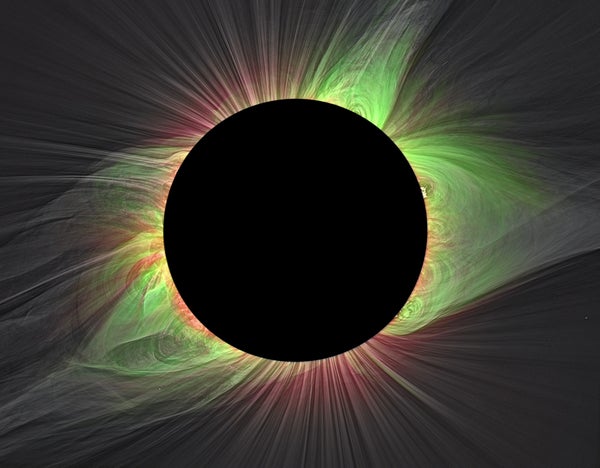Solar Eclipse Experiment Will Fly a Kite to Avoid Cloudy Skies
A kite-borne experiment will observe the sun’s mysterious corona during the upcoming total solar eclipse
The 2017 total solar eclipse, photographed by the Solar Wind Sherpas. Red corresponds to light from Fe XI and green corresponds to light from Fe XIV.
Miloslav Druckmüller, Shadia Habbal, Pavel Starha, Judd Johnson, Jana Hoderová
Shadia Habbal has gone to the ends of the Earth for science. The University of Hawaii astronomer leads a group of researchers called the Solar Wind Sherpas. These scientists have traveled around the world to observe 18 total solar eclipses since 1995—including in the Arctic and Antarctica. Each trip has involved two years of preparation for a few precious minutes of standing in the moon’s shadow, hoping to catch a glimpse of the sun’s corona—the feathery outer solar atmosphere that is usually outshined by our star’s light.
Yet more than a third of the eclipses the Sherpas traveled to have been clouded out. In 2021 the group trekked all the way to Antarctica and didn’t see any part of the total eclipse. That was “a brutal, heart-wrenching, miserable experience,” says Sage Constantinou, an astronomy graduate student at the University of Hawaii and a member of the Sherpas.
The team will have another chance during the upcoming total solar eclipse over North America on April 8. And this time they have an unconventional plan for getting around the clouds. The scientists will launch a massive kite loaded with instruments two miles high into the sky, hopefully above any eclipse-obstructing clouds. The project will be the first to use a kite for solar eclipse observations. If it works, it will allow a view of the corona even if the skies are cloudy.
On supporting science journalism
If you’re enjoying this article, consider supporting our award-winning journalism by subscribing. By purchasing a subscription you are helping to ensure the future of…
Read the full article here







